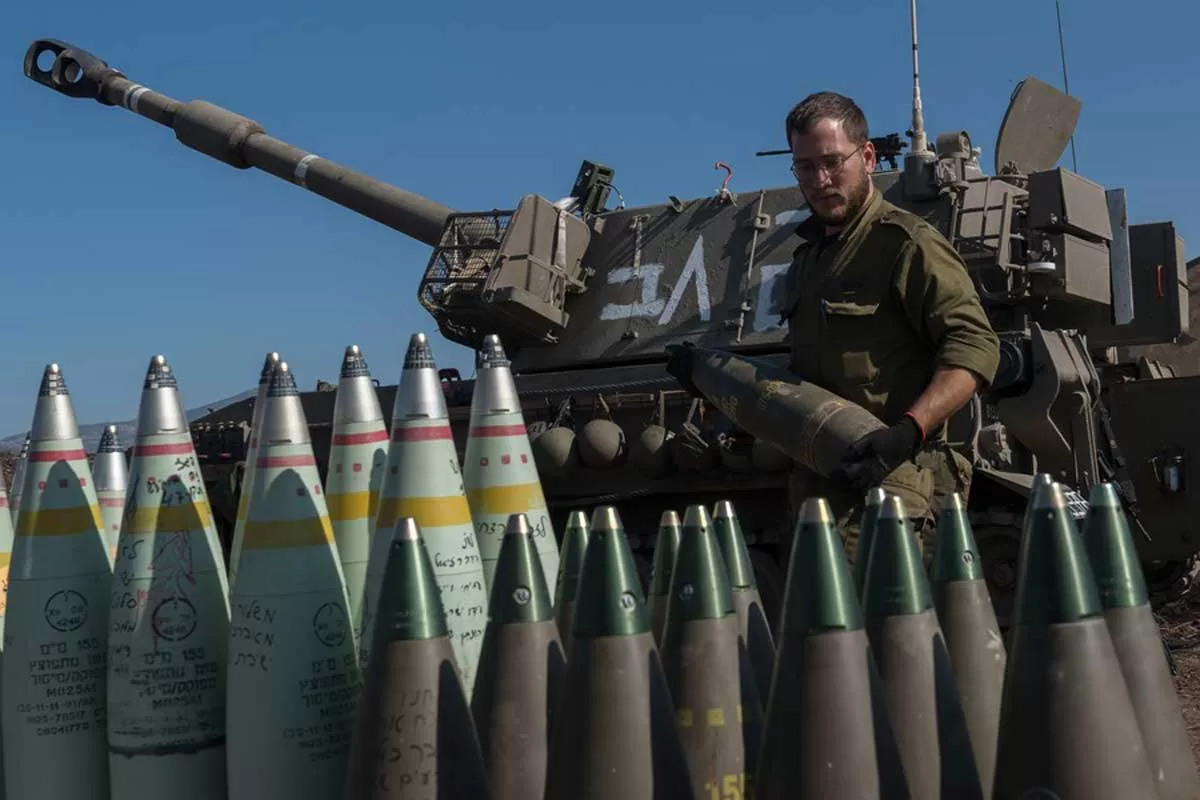It is very rare that the use of these submarines is publicised. The CENTCOM provided no additional details but it posted an image that apparently showed an Ohio-class submarine in Egypt’s Suez Canal Bridge. Interestingly, CENTCOM also separately shared an image of a nuclear-capable B-1 bomber operating in the Middle East.
Taken together, these US deployments, coming on top of the formidable presence of two aircraft carriers and warships hundreds of advanced jet fighters in the Eastern Mediterranean and the Red Sea respectively, are with an eye on “the other side of the equation,” as Secretary of State Antony Blinken quaintly described Hamas, Hezbullah, and Iran during his latest visit to Tel Aviv.
In a related development, perhaps, the CIA director, William Burns arrived in Israel on Sunday for urgent consultations. The New York Times reported that the US is “looking to expand its intelligence sharing with Israel.”
Arguably, the most charitable explanation for the deployment of a US nuclear submarine, which forms part of the Pentagon’s “nuclear triad” – Ohio-class boats are the largest submarines ever built for the US Navy — near the war zone is that the Biden Administration is preparing for an escalation of the war into Lebanon to draw out Hezbollah, which may in turn trigger an Iranian reaction.
In his speech Hezbollah chief Hassan Nasrullah seemed to anticipate precisely such a turn of events when he explicitly warned the US of consequences that couldn’t be any different from the catastrophic American involvement in Lebanon’s civil war in the early 1980s. Ironically, this is also the 40th anniversary year of the suicide bombing of the barracks housing US forces in Beirut International Airport in October 1983 in which 220 Marines, 18 sailors and three soldiers were killed forcing a US withdrawal from Lebanon.
Clearly, the locus of the US strategy in the present Middle situation may be shifting from diplomacy, which has anyway lost traction. Blinken’s desperate attempts to address the mounting international criticism of Israel’s horrific war crimes by diverting attention to a “humanitarian pause” in the fighting, et al, has been unceremoniously shot down by Netanyahu.
Equally, the Biden administration’s hurried attempt to promote a vague outline for a post-war Gaza that might include a combination of a revitalised Palestinian Authority, a peacekeeping force etc., has been met with a distinct lack of enthusiasm at Blinken’s meeting in Amman with the Arab foreign ministers – from Jordan, Egypt, Saudi Arabia, Qatar, and the United Arab Emirates – who instead demanded an immediate ceasefire, while Blinken said Washington wouldn’t push for one.
Blinken travelled to Ramallah from Amman where the head of the Palestine Authority Mahmoud Abbas also gave him short shrift saying that the PA would only be ready to shoulder full responsibility for the Gaza Strip in the framework of a “comprehensive political solution” that would include the West Bank, East Jerusalem and Gaza — and, furthermore, that security and peace can only be achieved by ending the occupation of the territories of the “State of Palestine,” and by recognising East Jerusalem as its capital. The meeting lasted for less than an hour and ended without public statements.
Meanwhile, China and the UAE have since called for a closed-door meeting of the UN Security Council in another attempt to seek an immediate ceasefire, which the Biden Administration will certainly oppose. Suffice to say, the Biden Administration feels boxed in and the only way out is by something giving way through exercise of coercive means.
The US is watching with frustration as new regional equations are appearing among Muslim nations. The foreign ministers of Iran and Saudi Arabia held another phone conversation today. The OIC later announced that an extraordinary summit will be held in Riyadh on November 12 at the request of the current chairman, Saudi Arabia, to discuss Israel’s attacks on the Palestinian people.
Certainly, the Iran-Saudi rapprochement, mediated by Beijing, has profoundly transformed the regional security environment with regional states distinctly preferring to find solutions to their problems without outside interference, and the old schisms and xenophobia promoted by the US to perpetuate its dominance having no takers anymore.
As the death toll in Gaza crosses 10,000, feelings are indeed running high in the Muslim world. Iran’s Supreme Leader Ali Khamenei said today that “all the evidence and indications show the direct involvement of the Americans in running the war” in Gaza. Khamenei added that as the war goes on, the reasons behind the US’s direct role would become more explicit.
The Chief of the Israeli General Staff, Herzi Halevi, said on Sunday during a meeting in the Northern Command, “We are ready to strike in the north at any moment. We understand that it can happen… We have a clear goal of restoring a significantly better security situation at the borders, not only in the Gaza Strip.”
There is no question that the location of the US nuclear submarine to the east of Suez is an attempt to intimidate Iran from intervening, while Israel, with US backing, proceeds to open a second front in Lebanon. The Israeli authorities have announced evacuation of people from settlements located in a zone up to five kms from the border with Lebanon.
The past one month has shown the precipitous decline of US influence and the highly volatile global environment since the war began in Ukraine in February last year.
